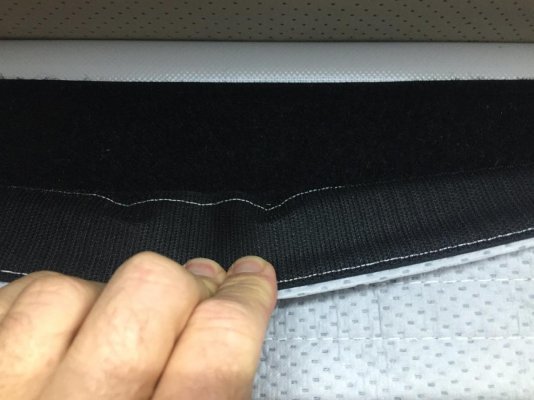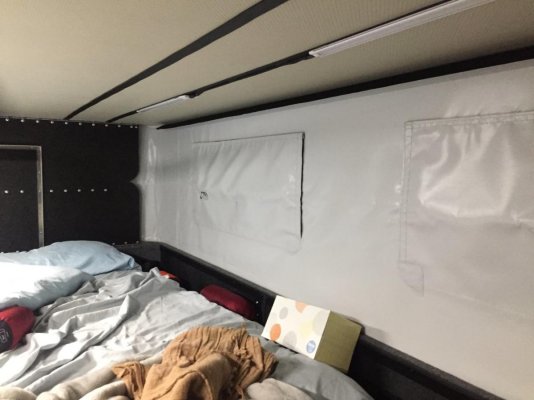That's lab testing. Field testing in my camper shows a 10-15 degree temperature advantage with Reflectix vs without - and that is in temps down to the 20's. I use velcro at the top and bottom all the way around.
As for the noise, mine doesnt seem to make any. The continuous velcro all the way around top and bottom stretches it tight enough, even on windy nights.
Reflectix, from published testing, has very little insulative value as a material. I know people insist that it works as an insulator but I find reports from reliable building material sources more useful than anecdotal stories by users who do not conduct any careful measurements.
If you use reflectix to create a closed on all sides dead air space (an assembly - which could be created by any number for materials) then the dead air space is what provides the insulation.
Some excerpts on Reflectix:
"According to ASTM C518 testing, Reflectix has an R-value of 1.04. That's quite low. If you can successfully construct a wall assembly that includes a 3/4 air gap on one or both sides of the Reflectix, the R-value of the entire wall assembly (not the R-value of the Reflectix) will go up. The increase in R-value is due to the R-value of the air space or spaces. However, this higher R-value depends upon the long-term maintenance of the air space, and will be degraded if the Reflectix ever sags."
https://www.finehomebuilding.com/forum/reflectix-r-value-claims-reasonable
"Be careful in touting R-values for foil-faced bubble wraps. The numbers you quote come from manufacturers' claims; however, an examination of the testing on which those claims are based shows that the quoted R-values are "assembly" R-values, not material R-values. The R-value is for a wall or ceiling assembly including two 3/4-inch (min.) enclosed air spaces, one on each side of the foil-faced product. Such a wall is tricky to build. Moreover, the R-value derives more from the air spaces than the foil-faced bubble wrap. The companies are claiming R-value credit for studs, plywood, strapping, and dead air spaces that you have to create and build. What they never tell you is that those air-spaces have a significant R-value, with or without their bubble-wrap.
The R-value of foil-faced bubble wrap ranges from R-1 to R-2."
"You're right that it's important for builders to understand the proper applications of radiant insulating materials, but the numbers I quoted are based on ASTM C236, which (as you state) is for guarded hot box testing of assemblies, not just "manufacturer's claims".
"I have contacted Monty Millspaugh, Lisa Coverdale, and Angelic Eden at Reflectix. In connection with my investigations, I requested a copy of a lab report showing ASTM C518 testing for Reflectix. They sent me the lab report; it shows an R-value of R-1.04, which is higher than the result obtained in an ASTM C518 test performed by Glacier Bay (see link in my previous post); Glacier Bay measured the R-value of Reflectix and obtained a result of R-0.67."
https://forums.jlconline.com/forums/forum/jlc-online-expert-forums/building-science/37256-nanotech-insulation


